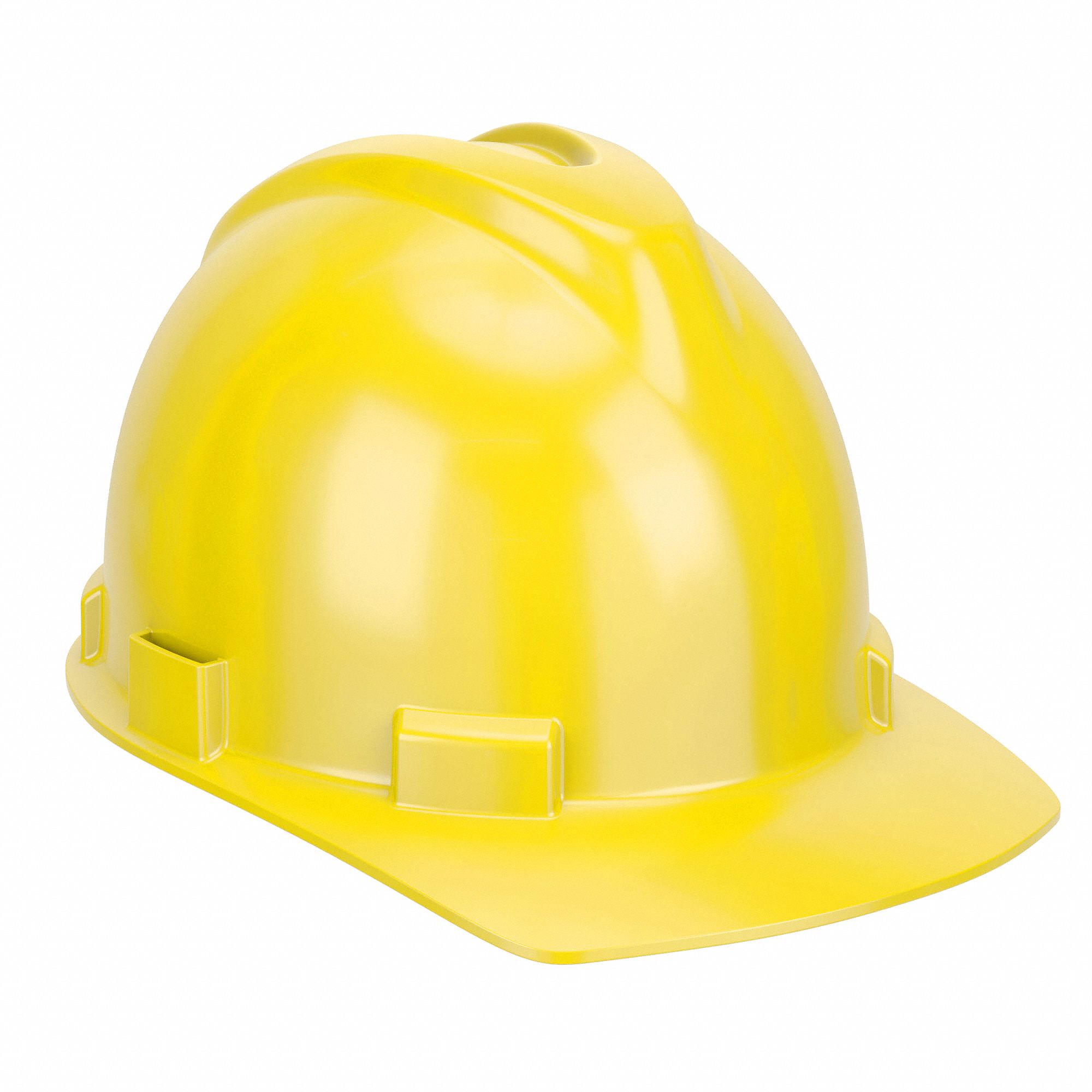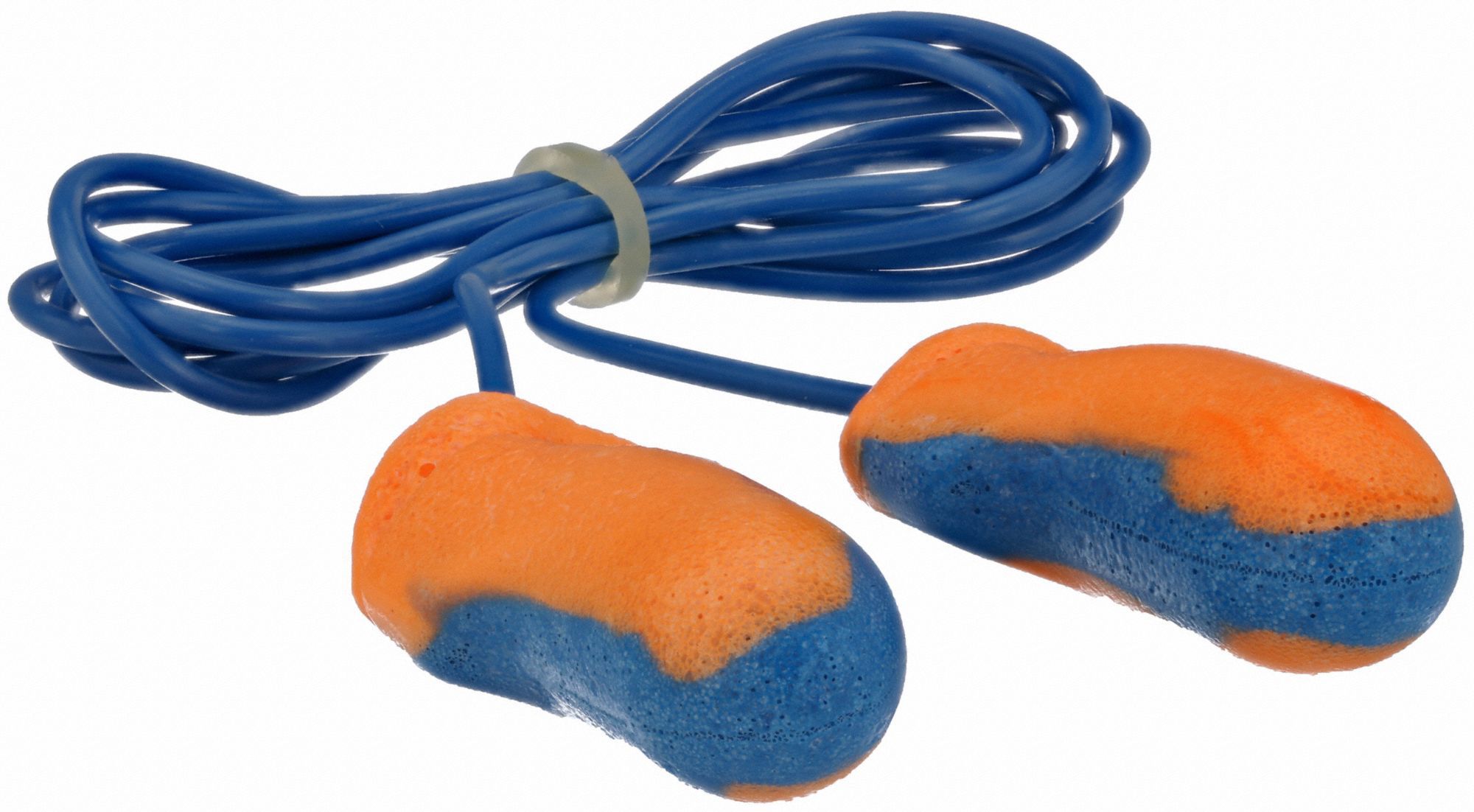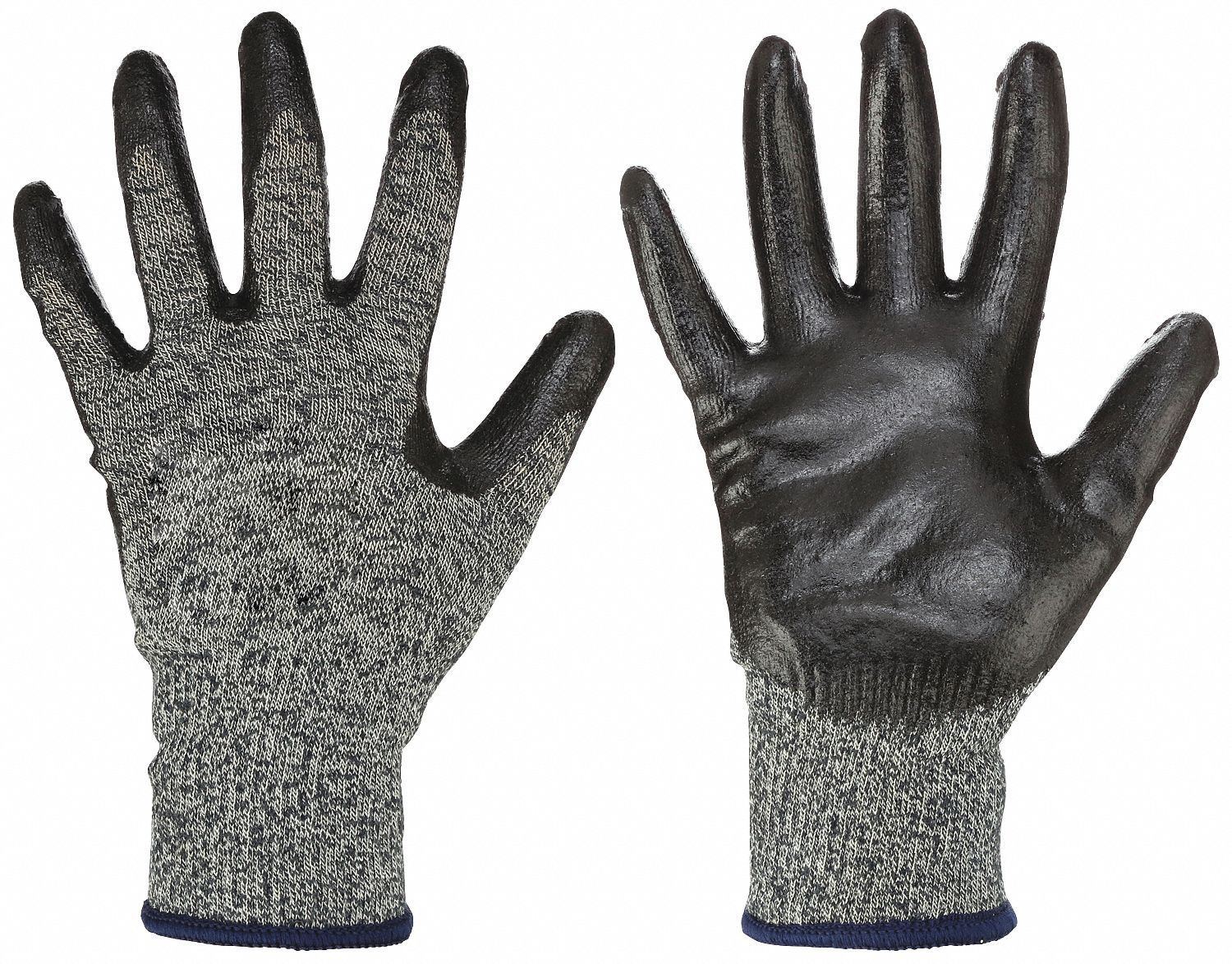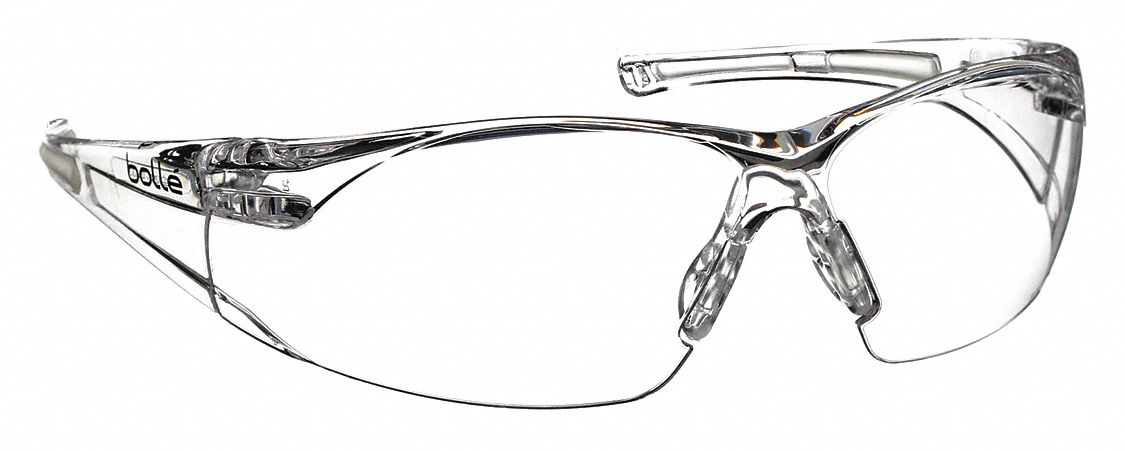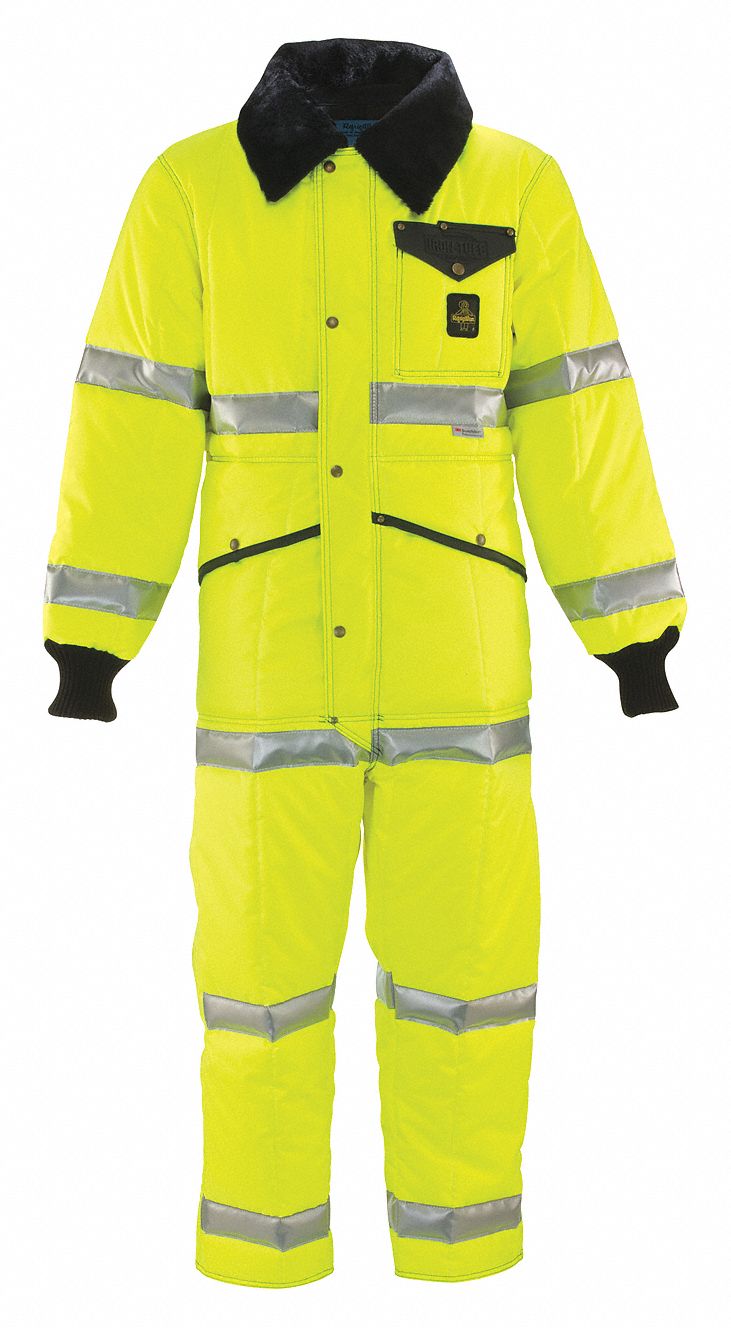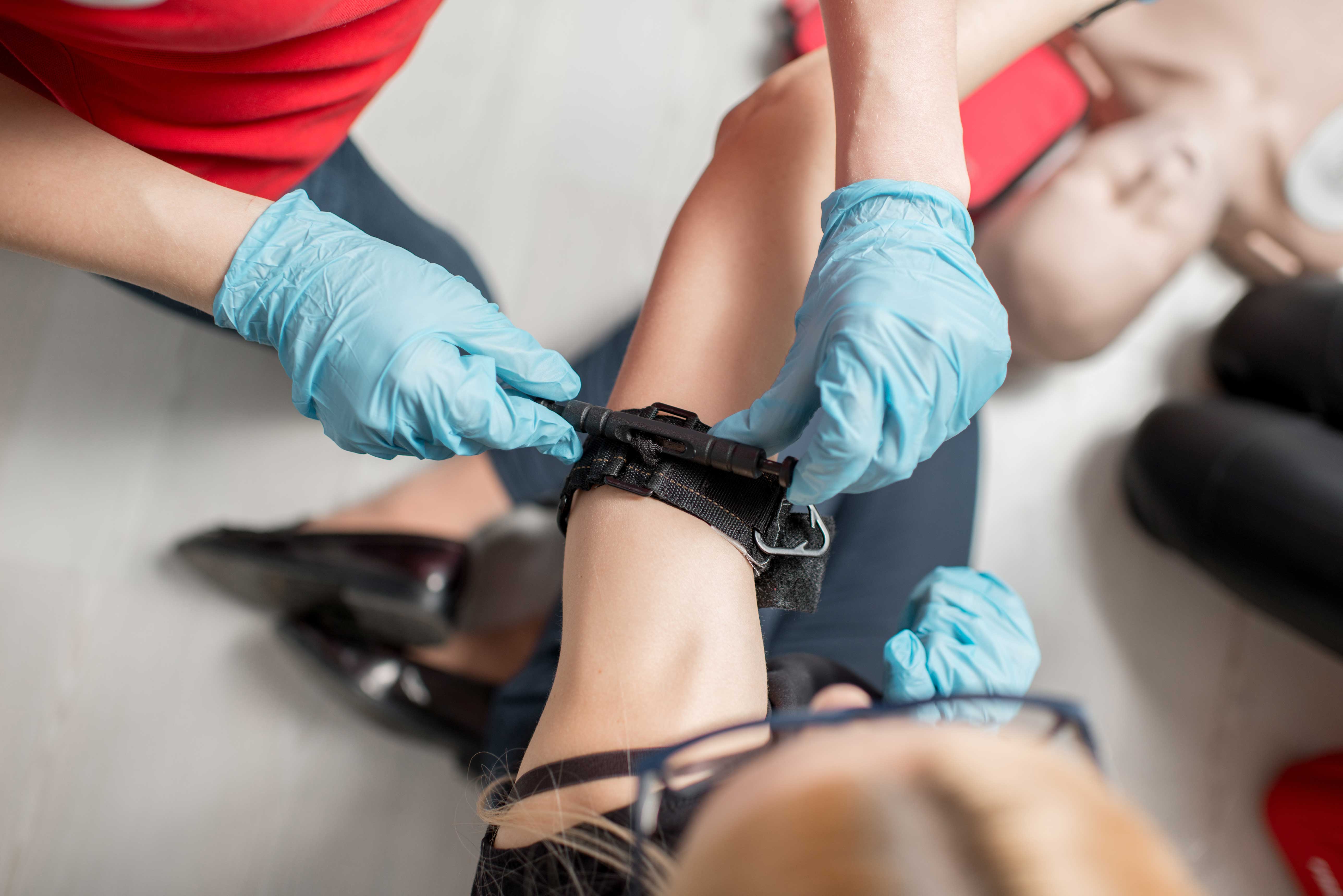

How to STOP THE BLEED® with Proper Training and Equipment
By Grainger Editorial Staff 5/10/19


Life-threatening emergencies can happen anywhere—even in your facility. Knowing how to respond to emergencies to help control bleeding can be critical to saving lives since bystanders are often the closest to start first aid. According to a study cited by the Stop the Bleed Coalition, it takes first responders an average of 7 to 10 minutes to arrive during emergencies. See how greater awareness, employee training and strategically placed equipment and trauma kits all converge to help companies reduce the number of life-threatening bleeding events on their premises.
ABCs of Bleeding Control
According to the New England Journal of Medicine (NEJM), hemorrhage leads to about 60,000 deaths per year in the U.S. Early recognition of hemorrhagic shock and quick actions to help stop bleeding can be lifesaving since it can be two hours from when shock begins until death.
Of course, it doesn't take a violent incident to create a situation whereby someone needs immediate help to "stop the bleed." For example, in an industrial setting or out on a job site, even a minor accident can escalate quickly if not handled properly.
STOP THE BLEED training teaches three basic steps known as the ABCs of bleeding control:
A: Alert 911
Once it’s safe, alert 911 to notify emergency medical responders and police officers about the incident and give them the best location to help get them to the scene as quickly as possible. Follow instructions from the 911 operator.
B: Bleeding
Find the source of blood. There may be multiple sources, and clothing can sometimes hide life-threatening injuries. Look for any of the following: continuous bleeding, pooling blood or large-volume bleeding.
C: Compression
Use gauze or cloth to cover the injury. Wear gloves (if available) to protect yourself from blood-borne infections. Focus on the location of the bleeding and apply direct pressure to the wound. If pressure helps stop the bleeding, keep compressing the wound until professional help arrives. Use gauze to tightly pack the wound and hold pressure for more extensive injuries until emergency responders arrive.
How 'Stop the Bleed' Training Began
STOP THE BLEED is a collaborative initiative led by the American College of Surgeons Committee on Trauma (ACS COT) to help bring bleeding control knowledge to the public. Greatly influenced by world events and the 2015 Hartford Consensus, the STOP THE BLEED campaign is based on the lessons the U.S. Department of Defense (DoD) learned about controlling severe bleeding during the Iraq and Afghanistan wars. The program's goal is to train and help equip private citizens to use medically proven bleeding control practices to help save lives during emergencies. To accomplish this goal, the DoD partnered with several governmental and private organizations to offer training courses and expand the availability of STOP THE BLEED kits and other critical emergency medical equipment in every public venue, including schools, community centers, places of worship and stadiums.
It Starts with Employee Training
Without prompt medical attention, a person can bleed to death in less than five minutes. This puts companies in a position to help employees be prepared to handle a bleeding event, before first responders can arrive. Companies have many available training resources, including STOP THE BLEED training courses, to help prepare individuals in the proper ways to respond during emergencies.
First Aid Kit Workplace Requirements
Several OSHA standards address workplace first aid requirements, including 29 CFR 1910.151, 1926.50, 1917.26, and 1918.97 for various industries. OSHA standard requirements are based on the expected hazards of each industry or operation. OSHA encourages every worksite to have a trained first aid responder on site. OSHA first aid regulation 29 CFR 1910.151(b) states, “In the absence of an infirmary, clinic, or hospital in near proximity to the workplace which is used for the treatment of all injured employees, a person or persons shall be adequately trained to render first aid. Adequate first aid supplies shall be readily available.” According to OSHA, a person who has been trained to give first aid must be able to quickly access first aid supplies to provide any injured or sick employees with immediate first aid attention. The first aid supplies should be located in an easily accessible area, meaning “the first aid providers should not have to travel through several doorways, hallways or stairways to access first aid supplies.” OSHA provides additional guidance on interpreting the minimum first aid training and certification requirements and kits employers should provide for bleeding control in a 2019 standard interpretation.
In addition to OSHA requirements, the American National Standards Institute (ANSI) and International Safety Equipment Association (ISEA) American National Standard (ANSI/ISEA Z308.1-2021) establishes minimum requirements for workplace first aid kits and supplies. The revised standard maintains the classification of “Class A” and “Class B” kits introduced in the 2015 update. Class A kits generally are suitable for treating all types of wounds, minor burns and eye injuries. Class B kits are designed to treat injuries typically found in heavily populated workplaces and high-risk environments, like factories, warehouses and outdoor areas. A foil blanket was added as a mandatory item in 2021 for both types of kits due to its multiple uses when treating a workplace injury or illness.
Employers should consider the uniqueness of the work environment and the types of potential injuries that can occur to determine if additional first aid supplies are needed in a worksite. Experts recommend employers inspect first aid kits every month or after a first aid incident when products are used and encourage employers to regularly disinfect first aid cabinet surfaces.
Equipping Your Facility
You don't want to waste time searching for first aid supplies during an emergency. To help ensure first aid supplies are easily accessible during emergencies, experts suggest making or buying pre-assembled bleeding control kits and storing them behind fire extinguishers. Since everyone typically knows where the fire extinguishers are kept, being able to quickly retrieve additional emergency supplies could help you care for someone if they become critically injured at your facility.
The STOP THE BLEED campaign urges companies to stock up on one-time use tourniquets, rescuer trauma kits, and multi-casualty bleeding control packs to help control bleeding in the workplace. They also recommend placing first aid cabinets near AEDs or fire extinguishers for quick emergency access.
According to Reuters Health, military and emergency medicine experts recommend that public venues install bleeding-control kits for at least 20 victims. If public venues are equipped with nitrile gloves, a tourniquet, wound dressing to stop severe bleeding, rolled gauze and trauma scissors, these kits could allow bystanders to help save lives. The kits should also include instructions so bystanders can quickly grab items during an emergency to help care for a victim.
It's important to note that it doesn't take a criminal attack to create a situation that puts an employee or site visitor in peril. Bleeding control is an essential skill for everyone to have. Bystander first aid and knowing how to quickly control bleeding during emergencies can significantly increase an individual’s chance of survival.
The information contained in this article is intended for general information purposes only and is based on information available as of the initial date of publication. No representation is made that the information or references are complete or remain current. This article is not a substitute for review of current applicable government regulations, industry standards, or other standards specific to your business and/or activities and should not be construed as legal advice or opinion. Readers with specific questions should refer to the applicable standards or consult with an attorney.

